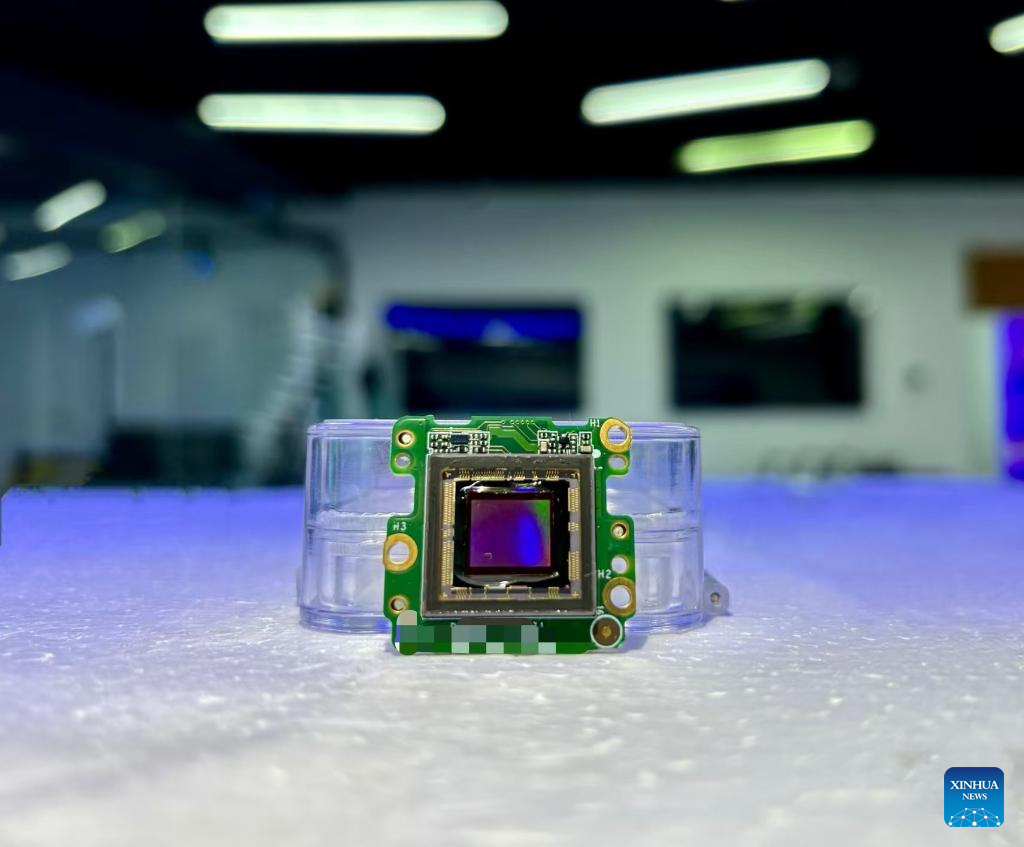


This photo taken on Nov. 5 shows a new type of real-time imaging sensor developed by the research team from Beijing Institute of Technology in Beijing, capital of China.(Xinhua/Zhao Xu)
BEIJING, Nov. 8 (Xinhua) -- Chinese researchers have developed a new type of real-time imaging sensor that can detect whether food has spoiled or heavy metals in water exceeded safe standards with just a glance.
According to a study paper published in the journal Nature on Thursday, a research team from Beijing Institute of Technology (BIT) has developed the world's first hundred-channel, million-pixel hyperspectral real-time imaging device, showing broad application prospects in remote sensing, life and health, smart agriculture and industrial automation.
Hyperspectral imaging technology can capture both the structure and spectral information across dozens or even hundreds of bands for a target, enabling precise material identification. It plays a crucial role in satellite remote sensing, deep space exploration, and the development of advanced equipment.
However, current hyperspectral imaging technology is hampered by traditional geometric dispersion and narrowband measurement methods, leading to bulky systems, heavy weight and integration challenges, which greatly limit its development and practical application.
The BIT team proposed an innovative principle of photon reuse, and developed an on-chip hyperspectral real-time imaging sensor through the integration of disciplines such as materials, electronics, optics and computer science.
The new image sensor weighs only tens of grams, with more than 100 spectral channels, a million-pixel resolution and a compact size. It boosts the efficiency of light energy utilization to a record of 74.8 percent from the current level of less than 25 percent, which enhances the sensitivity and precision of hyperspectral imaging.
"It has universal detection capabilities. A single device can not only detect the presence of heavy metals in water environments or find whether food has spoiled, but also monitor human blood oxygen and blood sugar levels," said Bian Liheng, the first author of the paper.
The team has applied the device in various fields, including capturing high-definition spectral video of lunar surface, conducting dynamic blood oxygen monitoring and water pollution analysis, and high-precision detection of sugar content and bruising in fruits. In an industrial scenario, the device has enabled high-precision automatic sorting of textiles.
According to Zhang Jun, team leader and the corresponding author of the paper, the research has opened up a new field in on-chip optical study and provided new ideas for the development of intelligent optoelectronic devices, with application potential in fields such as satellite remote sensing, deep space exploration, environmental monitoring and smart healthcare. ■

Wuyi rock pigment painting in China's Fujian infuses modern artistic elements into tradition

China-Serbia digital art exhibition explores time, space, heritage


Exhibition of children's arts opens in southwest China's Chongqing

World's largest ice and snow theme park opens, igniting China's winter tourism fever
点击右上角![]() 微信好友
微信好友
 朋友圈
朋友圈

请使用浏览器分享功能进行分享
